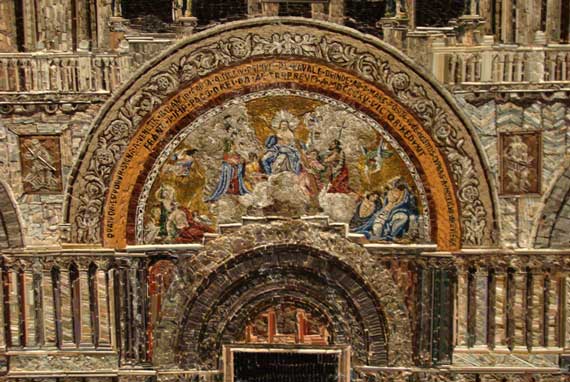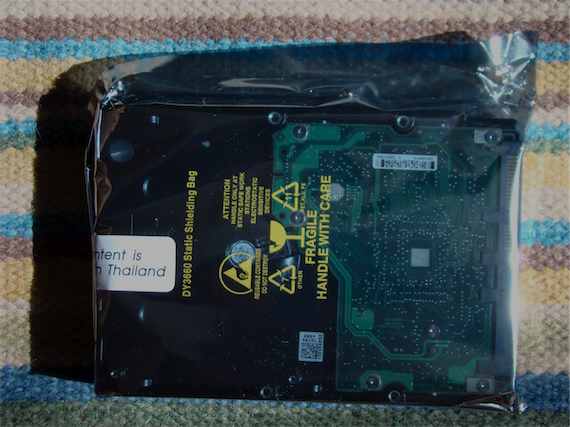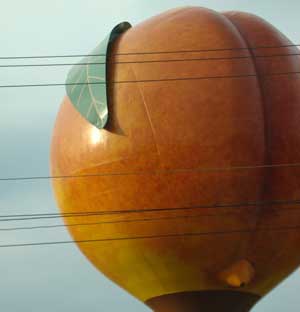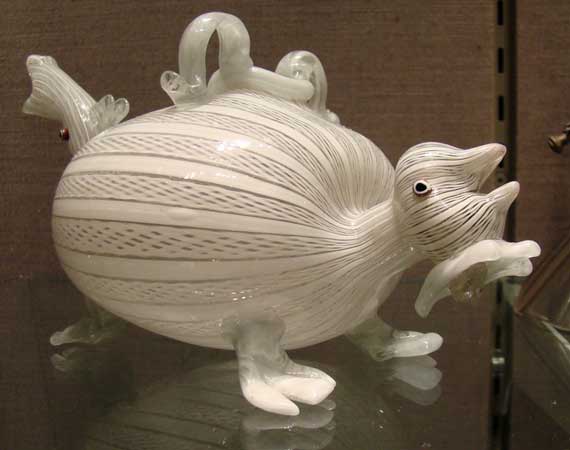Color, tricolor!
Tuesday, 20 November 2007

Left: ginko. Middle: some kind of maple (probably ornamental). Right: some kind of oak (I think).
Just a gorgeous, gorgeous fall day….
Tuesday, 20 November 2007

Left: ginko. Middle: some kind of maple (probably ornamental). Right: some kind of oak (I think).
Just a gorgeous, gorgeous fall day….
Monday, 19 November 2007

Close up of central design in 5×7 foot micromosaic of Venice’s Piazza San Marco, by E. Cerato, dated 1907. Detail is achieved by the shapes and arrangement of tiny pieces of glass called tesserae, which are cut from thin, opaque rods of glass.
It’s amazing what you can do if you devote the time it takes to get the job done. So, quit procrastinating!
Sunday, 18 November 2007

Central detail, Window with Hudson River Landscape from Rochroane by Louis Comfort Tiffany/Tiffany Studios, 1905; commissioned by Melchior S. Beltzhoover for the music room of his mansion (apparently demolished in 1978 after much of the artwork etc. had been removed) in Irvington-On-Hudson, New York. [Full view, but tiny image, although this one’s a bit larger.] I guess the music room had been relegated to a side of the house with an inferior view, of the driveway or stables….
One Laptop Per Child—OLPC. Here’s the link.
Today’s my day for a disquisition on this. We ordered ours today.
In short, Nicholas Negroponte has put together a team that has invented a versatile, easy-to-use, smallish laptop intended to improve and extend learning possibilities for kids (and teachers, parents, and families) around the globe. When you click the purchase button, you get one for you (which, perhaps, can be donated in this country) and pay for one for “a child in need” for $400 plus shipping (just under $425 total). And the OLPC Foundation is a 501(c)(3) tax-exempt organization. Cha-ching: tax deduction.
We all, as members of humanity, need to find ways to give to our fellow human beings. Giving can take many forms (EG, food, money, a listening ear). And the fellow human beings may be known to you, or be strangers you will never meet.
JCB and I try and spread our giving around, and vary it year by year, as well as philosophically.
I wanted to do the OLPC ’cause I think putting possibility in the hands of others is a wonderful thing, and possibility can take many forms.
We had already sealed the deal when I watched this one-hour video (highly recommended) presentation made to Google people—although I’m a bit squeamish that the identifiable individuals in the first three/four rows are all male…. I now understand better how the laptop works (using so little power, so efficiently, with an open system, so users can use it to invent and create and dream, to not need updates, armed with an anti-theft system, etc.) [link to text on this].
I was really sold that we had done a good thing when I listened to the opening section of the Google video when the presenter, Ivan Krstic, discussed how people learn (I know, that’s the anthropologist in me). OLPC’s goal is to change how kids learn, improve it and take it beyond the normal formal learning system (teacher in front of students directing the learning experience in classroom in building), in which learning is no longer mostly curiosity-driven (Krstic’s term), but mostly conducted by the teacher.
OLPC’s idea is to open up opportunity. Now. By reinforcing peer learning, allowing kids to follow their own curiosity. Laptops might help, assisted by the conventional classroom learning experience.
Then I became REALLY CONVINCED that this was a wise allocation of our giving resources.
’Nuff preaching. Your move.
After all, this is T-giving week….
Saturday, 17 November 2007

We learned many new vocabulary words at the Corning Museum of Glass, which I should have expected but didn’t.
Some words describe the glass objects, or parts of them. Others derive from the manufacturing process. All of them are not in the vocabularies of most of us. Take these two words: goblet and prunt. You are most likely familiar with the first and probably not with the second.
Technically, a goblet is a bowl on a stem supported by a foot.
Prunts are dabs or blobs of glass attached to the stem. They are both decorative, and sometimes embellished with a stamp, and can help improve the drinker’s grip.
This goblet (sorry, I didn’t photo the identification tag, but I suspect, hmm, maybe German?) has green prunts that have been stamped with a knobbly texture.
These goblets are fairly large, would have been relatively costly for most households, held alcoholic beverages, and may have been passed among diners—all the more reason for increasing the likelihood of safe passage by enhancing the grip.
Friday, 16 November 2007

What threshold of scariness is it that we now have a terabyte drive among our “gear”?
Actual capacity: 931.39 GB
FYI: A terabyte is one trillion (short scale) bytes, or 1000 gigabytes.
[cough, cough]
Thursday, 15 November 2007

Melancholia by Narcissus Quagliata, made in 1981–1982. The backlight is terribly uneven both in this photo and when I viewed it, yet I still found this image compelling, although I can’t quite put my finger on the reason why. To me, the man seems disingenuous and somewhat arrogant, rather than reflective and thoughtful, as the Corning Museum’s guide to the collections suggests.
Released from the patterns imposed by travel, I have cast about for a topic for today’s entry. The photo part was easy; I have a huge backlog from our travels over the last month; a plethora of photos is one characteristic of our travel patterns….
Meanwhile, let me note that overnight we got a good rain, although it’s been and continues to be so windy that the air must be sucking the moisture right back up out of the soil and vegetation. Still, rain is rain, right? I’ve yet to encounter the news story alleging that last weekend’s prayers at the statehouse and elsewhere have paid off, but I’m sure it’s being written or edited or posted right now…. Oops, I spoke too soon.
Into the mix, I’ve got to note that one Cobb County residence managed to waste use a whopping, and actually I mean mega-whopping 14,700 gallons per day on average in September, for a staggering 440,000 for the whole month. BTW, the average Atlanta residential client uses a mere (and still reducible) 183 gallons per day.
Okay, I have to report I still haven’t ordered the XO laptop, with the second one for charity. Have you? It’s still on my to-do list….
The other day John Hawks posted a blog entry with a link to this amazing graphic display of data by the notable Hans Rosling, and called the Trendalyzer project. The graphics program isn’t yet released, but I’ll wait around for it….
You also might want to check out this web page (thank you, KW), and generate a donation of rice to the United Nations World Food Programme with a vocabulary self-test. The WFP page says they’ve received over one billion grains of rice from freerice.com—enough to feed 50K people for one day. (I suspect the vocabulary is drawn more from British English than American.)
So, let’s get the rice statistic higher and the water use statistic lower, okay?
Does this entry have too many links? Maybe I got carried away….
Wednesday, 14 November 2007

It’s great to be back home, where the autumnal colors are vivid and the leaves are almost all still on the trees (maybe 90%). None of the trees and flowers we saw on this morning’s walk through our neighborhood was as brilliant as the leaves on this dogwood, which were especially striking backlit like this….
It’s also great (actually more than that: positively superlative!) that my parents are doing so well this year after the crises of last fall.
During our trip, we had wonderful visits with long-time friends in WI, MI, and NY, and I’m especially excited that we could meet a cutie who was born in late October, the newest listing in our address book (even if he doesn’t know it yet!).
Thanks for the Fat Tire, McGrady. We didn’t break any bottles on the way home!
Tuesday, 13 November 2007

The famous peach butt of Gaffney South Carolina is notoriously difficult to photograph from a moving car. Thanks to jcb for this attempt. (The Wikipedia calls it a Peachoid.)
Yes, it’s really a water tower….
Don’t forget about the Give One Get One program to distribute XO laptops to children in developing nations…. Here’s the CNN story on the Negroponte laptop giveaway….
Remember, you’ll get one to keep or give away, too!
Monday, 12 November 2007

The other day in western PA we were surprised by a smallish yet chubby black bear that scrambled across a guardrail and zipped across the road in front of us (no photo, sorry) in a mad dash for the woods on the other side (add your own riff on the old chicken-crossed-the-road joke here), but this snow we found in PA? in NY? is more evocative of winter for me. In our part of Atlanta, we see snow on the ground maybe every two or three years, although I guess with global warming that frequency may decrease. On the other hand, during the Little Ice Age, there was more snow across the Southeast, so that DeSoto and his bunch suffered a cold and unpleasant winter in 1539 and 1540 (I think) in southeastern North America. Can you tell I’m thinking about cycling and fluctuations (actually, both in nature/climate, and in societies)?
Sunday, 11 November 2007

It is impossible to pick an iconic image from the Corning Museum of Glass (we took almost 300 pictures during about four hours of wandering the place). I, of course, was most entranced by the historical collection of glass, from vessels to anthropomorphic figures, and more! Instead of any iconic image, I offer this glass basilisk, about 6 inches tall, in a terrible setting for photography (crammed on a shelf with other objects, with an unattractive backdrop).
I suppose many people encountered the word basilisk first in the Harry Potter books (although it’s also mentioned by Shakespeare), but the word has quite a history. In the real world, a basilisk is a mythical creature, a reptile hatched from a cock’s egg. Lots of impossibility there!
For reasons I can’t quite figure out, I keep thinking this little guy, if alive, would be grumpy and curmudgeonly, and perhaps a bit vague like an armadillo.